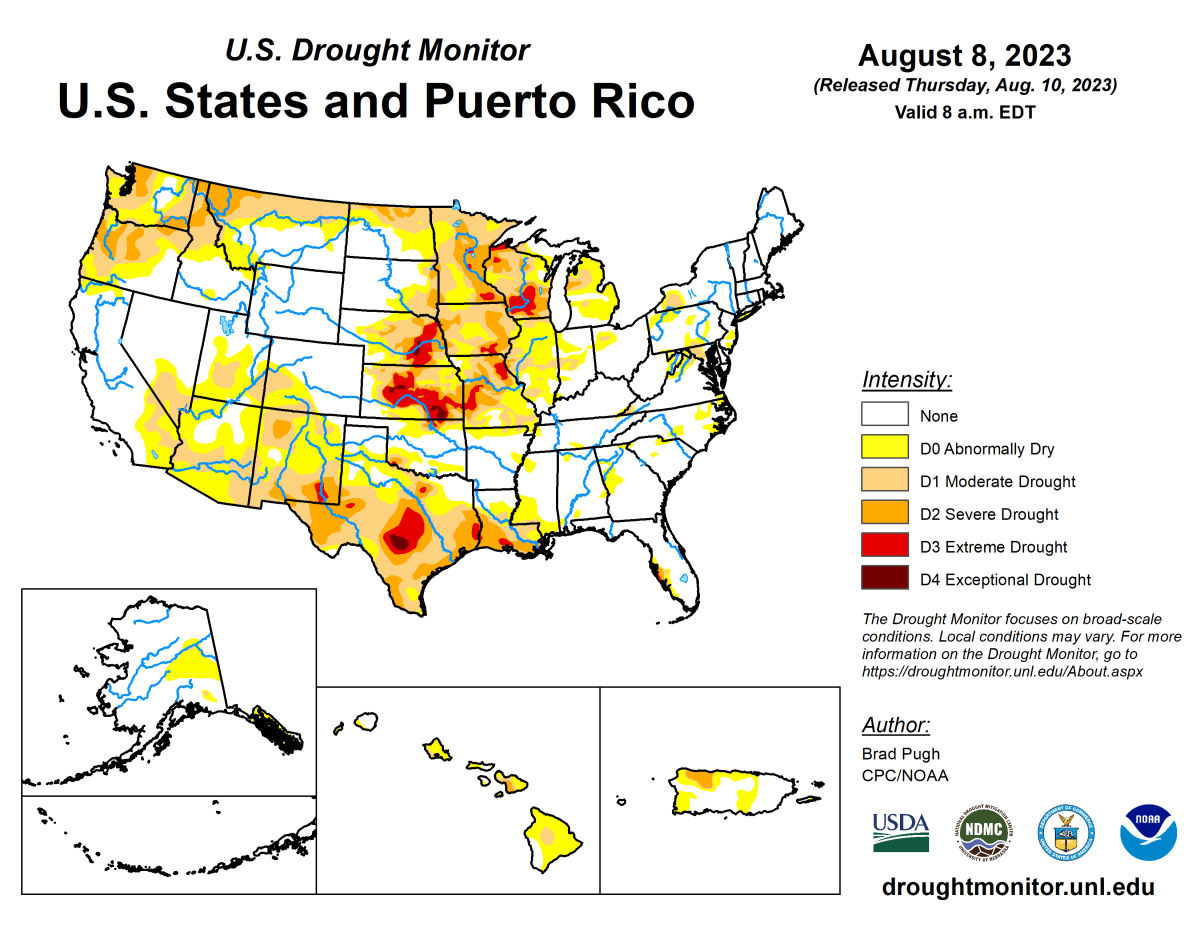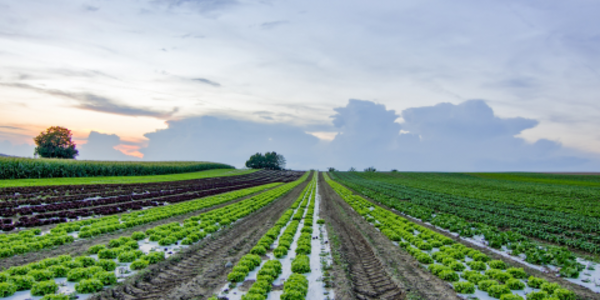
According to the August 8, 2023 U.S. Drought Monitor, moderate to exceptional drought covers 25.5% of the United States including Puerto Rico, an increase from last week’s 23.5%. The worst drought categories (extreme to exceptional drought) increased from 2.1% last week to 2.3%.
A strong ridge of high pressure continued to dominate the upper-level circulation across the contiguous U.S. during this U.S. Drought Monitor (USDM) week (August 2-8). The ridge was anchored over the south-central U.S. but extended northward across western Canada and Alaska. It was bisected by a jet-stream flow that pushed Pacific weather systems across the northern states and southern Canada. The ridge was part of a subtropical ridge system that extended eastward across the Caribbean and North Atlantic, and westward into the North Pacific.
Warmer- and drier-than-normal weather was associated with the ridge and extended across the southern states–especially the southern Plains–as well as the Gulf of Mexico, Caribbean, and Hawaii. Alaska was also drier and warmer than normal beneath the northern lobe of the ridge. The hot and dry weather set the stage for numerous wildfires that were burning across the western contiguous U.S. and in Alaska and Hawaii.
Cold fronts and surface low-pressure systems that were associated with the Pacific weather systems spread above-normal precipitation across much of the contiguous U.S. from the interior West to Ohio Valley, and along the Appalachian Mountain chain. The rain and fronts also kept weekly temperatures cooler than normal across much of this area. The exception was the Upper Mississippi Valley to western Great Lakes, which were warmer and drier than normal. Other exceptions include Puerto Rico, where convective showers gave parts of the island a wetter-than-normal week, and parts of Hawaii which were cooler than normal.
Drought or abnormal dryness contracted or was reduced in intensity in areas that were wetter than normal, especially in the central Plains to Ohio Valley. But drought or abnormal dryness expanded or intensified where it continued dry, especially from the Southwest to Lower Mississippi Valley, across the far northern Plains to the western Great Lakes, and in Hawaii and Alaska. Nationally, expansion exceeded contraction, so the nationwide moderate to exceptional drought area increased this week.
Abnormal dryness and drought are currently affecting over 131 million people across the United States including Puerto Rico—about 42.1% of the population

The full U.S. Drought Monitor weekly update is available from Drought.gov.
In addition to Drought.gov, you can find further information on the current drought on this week’s Drought Monitor update at the National Drought Mitigation Center.
The most recent U.S. Drought Outlook is available from NOAA’s Climate Prediction Center. The U.S. Department of Agriculture’s World Agriculture Outlook Board also provides information about the drought’s influence on crops and livestock.
For additional drought information, follow #DroughtMonitor on Facebook and Twitter.



